This week our younger students are putting together a Class Museum, while older students are completing their Scientific Report.
Foundation/Prep/Kindy to Year 3
 Students in Foundation/Prep/Kindy (Units F.3 and F-1.3), as well as those in Years 1 (Unit 1.3). 2 (Unit 2.3) and 3 (Unit 3.3) are all putting together Class Museums of items of historical interest, either found at school or brought from home. Since the activity is similar (although explored to different depths by different year levels), there is the option for teachers to combine efforts across classes, and even across year level to make a more substantial Museum display. The Class Museum is an activity designed to assist students to consider how life has changed and what aspects are similar and different. Students should consider which items are easily recognisable and which are harder to identify. They can practise different points of view by imagining themselves using these objects and living in the past. Teachers can link this back to the stories read in the first weeks of term and allow students to compare their own lives with different types of past experiences of daily and family life. Museum Labels and a resource on Museums are provided to gain an understanding of how and why objects are displayed in museums.
Students in Foundation/Prep/Kindy (Units F.3 and F-1.3), as well as those in Years 1 (Unit 1.3). 2 (Unit 2.3) and 3 (Unit 3.3) are all putting together Class Museums of items of historical interest, either found at school or brought from home. Since the activity is similar (although explored to different depths by different year levels), there is the option for teachers to combine efforts across classes, and even across year level to make a more substantial Museum display. The Class Museum is an activity designed to assist students to consider how life has changed and what aspects are similar and different. Students should consider which items are easily recognisable and which are harder to identify. They can practise different points of view by imagining themselves using these objects and living in the past. Teachers can link this back to the stories read in the first weeks of term and allow students to compare their own lives with different types of past experiences of daily and family life. Museum Labels and a resource on Museums are provided to gain an understanding of how and why objects are displayed in museums.
Years 3 to 6
 Older students are completing their main term research projects by finishing their Scientific Reports. This week students are concentrating on finishing their reports, drawing their Conclusions, making sure that their Bibliography is correct and formatting their report, including images, graphs and tables. For Year 3 students (Unit 3.7), the report will cover an aspect of the history of their capital city or local community. Year 4 students (Unit 4.3) are reporting on an investigation into Australia at the time of European contact and the start of European settlement. Students in Year 5 (Unit 5.3) are examining topics from Australian colonial history, and students in Year 6 (Unit 6.3) are researching topics from Federation and early 20th century Australian history. There is plenty of scope for incorporating digital technologies into the final version of the scientific report, especially for students in the upper year levels. Formatting a document correctly is an essential skill and addresses many aspects of the digital technologies curriculum, adding the possibility of another curriculum section for the teacher to mark as done for the term.
Older students are completing their main term research projects by finishing their Scientific Reports. This week students are concentrating on finishing their reports, drawing their Conclusions, making sure that their Bibliography is correct and formatting their report, including images, graphs and tables. For Year 3 students (Unit 3.7), the report will cover an aspect of the history of their capital city or local community. Year 4 students (Unit 4.3) are reporting on an investigation into Australia at the time of European contact and the start of European settlement. Students in Year 5 (Unit 5.3) are examining topics from Australian colonial history, and students in Year 6 (Unit 6.3) are researching topics from Federation and early 20th century Australian history. There is plenty of scope for incorporating digital technologies into the final version of the scientific report, especially for students in the upper year levels. Formatting a document correctly is an essential skill and addresses many aspects of the digital technologies curriculum, adding the possibility of another curriculum section for the teacher to mark as done for the term.
OpenStem’s Understanding Our World program ensures that student’s work for assessment is completed well before the end of term, decreasing the rush to get everything assessed in the final weeks of term. It is our aim to support teachers and facilitate the processes involved in both teaching and assessment.

 Our youngest students (
Our youngest students ( Students in integrated Year 3/4 classes (
Students in integrated Year 3/4 classes ( Each year level focuses on a different aspect of Australian history and enough topics are supplied to ensure that each student is working on new information, even in multi-age classes. Instead of finding a continual stream of new, novel HASS units, or repeating material some students have covered before, OpenSTEM’s
Each year level focuses on a different aspect of Australian history and enough topics are supplied to ensure that each student is working on new information, even in multi-age classes. Instead of finding a continual stream of new, novel HASS units, or repeating material some students have covered before, OpenSTEM’s 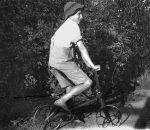 Students in Foundation/Prep/Kindy (
Students in Foundation/Prep/Kindy (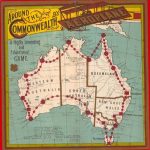 Older students are expected to analyse their Data in increasing detail relevant to their year-level, as well as listing sources in the Method section of their
Older students are expected to analyse their Data in increasing detail relevant to their year-level, as well as listing sources in the Method section of their 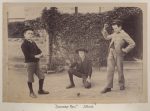 The focus of this term is an investigation into the past and how we can find out about past events. For students in Foundation/Prep/Kindy (Units
The focus of this term is an investigation into the past and how we can find out about past events. For students in Foundation/Prep/Kindy (Units 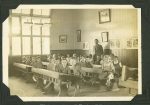 As students in Years 3 (Unit 3.7), 4 (Unit 4.3), 5 (Unit 5.3) and 6 (Unit 6.3) move into the period of gathering information from sources to address their research question, teachers should guide them to consider the nature of each source and how to record it. Resources such as
As students in Years 3 (Unit 3.7), 4 (Unit 4.3), 5 (Unit 5.3) and 6 (Unit 6.3) move into the period of gathering information from sources to address their research question, teachers should guide them to consider the nature of each source and how to record it. Resources such as  This week students in stand-alone Foundation/Prep/Kindy classes (
This week students in stand-alone Foundation/Prep/Kindy classes (

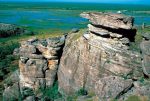
Our class created ginger beer with the help of the ginger beer kit. The children were really engaged with the…
Indi Alford, Teacher